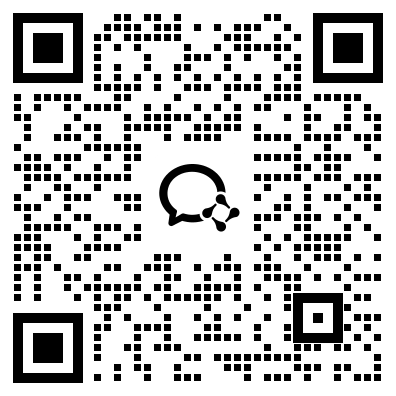自考“英语语言学”资料(1)
1.1.What is language?
Language is system of arbitrary vocal symbols used for human communication.It is a system,since linguistic elements are arranged systematically,rather than randomly.Arbitrary,in the sense that there is usually no intrinsic connection between a work (like book)and the object it refers to.This explains and is explained by the fact that different languages have different books:book in English,livre in French,in Japanese,in Chinese,check in Korean.It is symbolic,because words are associated with objects,actions,ideas etc.by nothing but convention.Namely,people use the sounds or vocal forms to symbolize what they wish to refer to.It is vocal,because sound or speech is the primary medium for all human languages,developed or new。Writing systems came much later than the spoken forms.The fact that small children learn and can only learn to speak (and listen)before they write (and read)also indicates that language is primarily vocal,rather than written.The term human in the definition is meant to specify that language is human specific.
1.2.What are design features of language?
Design features here refer to the defining properties of human language that tell the difference between human language and any system of animal communication.They are arbitrariness,duality,productivity,displacement,cultural transmission and interchangeability
1.3.What is arbitrariness?
By“arbitrariness”,we mean there is no logical connection between meanings and sounds(see I .1)A dog might be a pig if only the first person or group of persons had used it for a pig.Language is therefore largely arbitrary.But language is not absolutely seem to be some sound-meaning association,if we think of echo words,like“bang”,“crash”,“roar”,which are motivated in a certain sense.Secondly,some compounds(words compounded to be one word )are not entirely arbitrary either.“Type”and“write”are opaque or unmotivated words,while“type-writer”is less so,or more transparent or motivated than the words that make it.So we can say“arbitrariness”is a matter of degree.
1.4.What is duality?
Linguists refer“duality”(of structure)to the fact that in all languages so far investigated,one finds two levels of structure or patterning.At the first,higher level,language is analyzed in terms of combinations of meaningful units (such as morphemes,words etc.);at the second,lower level,it is seen as a sequence of segments which lack any meaning in themselves,but which combine to form units of meaning.According to Hu Zhanglin et al.(p.6),language is a system of two sets of structures,one of sounds and the other of meaning.This is important for the workings of language.A small number of semantic units(words),and these units of meaning can be arranged and rearranged into an infinite number of sentences(note that we have dictionaries of words,but no dictionary of sentences!)Duality makes it possible for a person to talk about anything within his knowledge.No animal communication system enjoys this duality,or even approaches this honour.
1.5.What is productivity?
Productivity refers to the ability to the ability to construct and understand an indefinitely large number of sentences in one's native language,including those that has never heard before,but that are appropriate to the speaking situation.No one has ever said or heard“A red-eyed elephant is dancing on the small hotel bed with an African gibbon”,but he can say it when necessary,and he can understand it in right register.Different from artistic creativity,though,productivity never goes outside the language,thus also called“rule-bound creativity”(by N.Chomsky)。
1.6.What is displacement?
“Displacement”,as one of the design features of the human language,refers to the fact that one can talk about things that are not present,as easily as he does things present.In other words,one can refer to real and unreal things,things of the past,of the present,of the future.Language itself can be talked about too.When a man,for example,is crying to a woman,about something,it might be something that had occurred,or something that is occurring,or something that is to occur.When a dog is barking,however,you can decide it is barking for something or at someone that exists now and there.It couldn't be bow-wowing sorrowfully for dome lost love or a bone to be lost.The bee’s system,nonetheless,has a small share of“displacement”,but it is an unspeakable tiny share.
1.7.What is cultural transmission?
This means that language is not biologically transmitted from generation to generation,but that the details of the linguistic system must be learned anew by each speaker.It is true that the capacity for language in human beings(N.Chomsky called it“language acquisition device”,or LAD) has a genetic basis,but the particular language a person learns to speak is a cultural one other than a genetic one like the dog‘s barking system.If a human being is brought up in isolation he cannot acquire language.The Wolf Child reared by the pack of wolves turned out to speak the wolf's roaring“tongue”when he was saved.He learned thereafter,with no small difficulty,the ABC of a certain human language.
1.8.What is interchangeability?
(1)Interchangeability means that any human being can be both a producer and a receiver of messages.We can say,and on other occasions can receive and understand,for example,“Please do something to make me happy.”Though some people (including me) suggest that there is sex differentiation in the actual language use,in other words,men and women may say different things,yet in principle there is no sound,or word or sentence that a man can utter and a woman cannot,or vice versa.On the other hand,a person can be the speaker while the other person is the listener and as the turn moves on to the listener,he can be the speaker and the first speaker is to listen.It is turn-taking that makes social communication possible and acceptable.
(2)Some male birds,however,utter some calls which females do not(or cannot?),and certain kinds of fish have similar haps mentionable.When a dog barks,all the neighbouring dogs bark.Then people around can hardly tell which dog (dogs)is are“speaking”and which listening.
1.9.Why do linguists say language is human specific?
First of all,human language has six“design features”which animal communication systems do not have,at least not in the true sense of them(see I .2-8)Let's borrow C.F.Hocket's Chart that compares human language with some animals'systems,from Wang Gang(1998,p.8)。
Secondly,linguists have done a lot trying to teach animals such as chimpanzees to speak a human language but have achieved nothing inspiring.Washoe,a female chimpanzee,was brought up like a human child by Beatnice and Alan Gardner.She was taught“American sign Language”,and learned a little that made the teachers happy but did mot make the linguistics circle happy,for few believed in teaching chimpanzees.
Thirdly,a human child reared among animals cannot speak a human language,not even when he is taken back and taught to lo to so (see the“Wolf Child”in I.7)
1.10.What functions does language have?
Language has at least seven functions:phatic,directive,Informative,interrogative,expressive,evocative and performative.According to Wang Gang (1988,p.11),language has three main functions:a tool of communication,a tool whereby people learn about the world,and a tool by which people learn about the world,and a tool by which people create art .M .A.K.Halliday,representative of the London school,recognizes three“Macro-Functions”: ideational,interpersonal and textual(see !11-17;see HU Zhuanglin et al.,pp10-13,pp394-396)。












